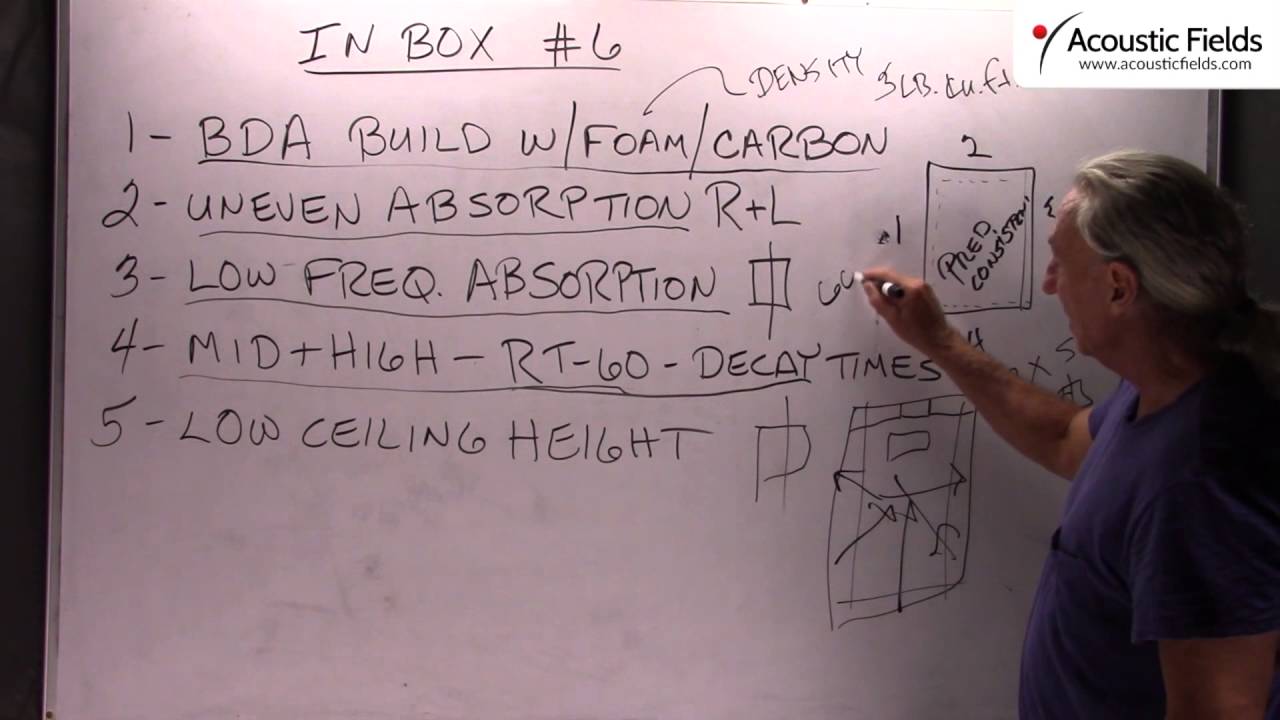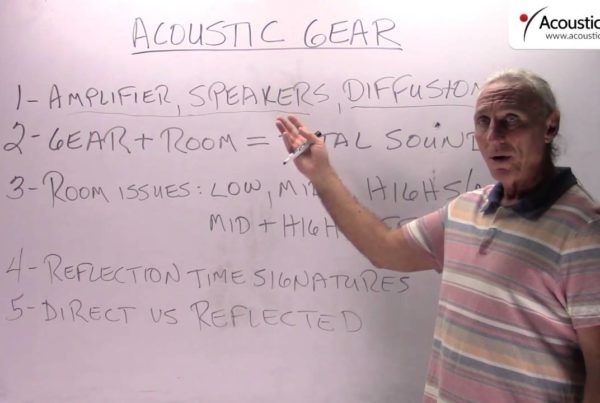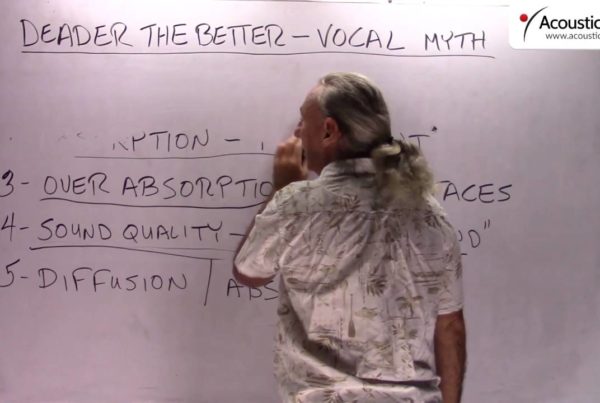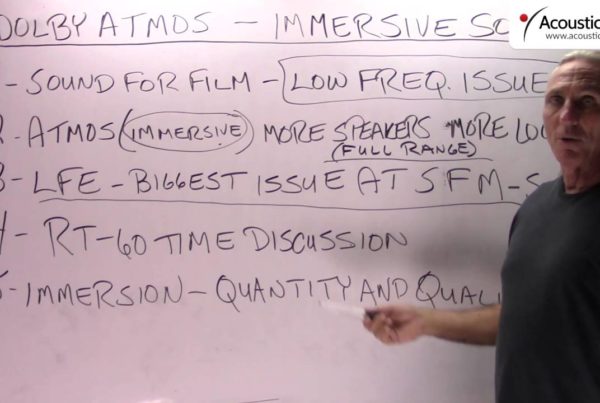Today we’re going to talk about some of the questions and comments I get in my inbox. We have an ongoing series with these and I think this is #6 in the series. So these questions keep coming up so I want to keep going over them so people can get an understanding and we don’t have to keep doing this all the time. But this will help you hopefully with some of your questions and save some time in the process.
The first one we always get is on our BDA build. Now, our BDA build comes with 2 options. Basically – and the BDA build, that’s our diaphragmatic absorber, an inside diaphragmatic absorber is a perforated absorber. That’s the one with the peg board that you can see in our videos.
Now, inside that filter you can have foam or carbon. It depends on obviously your budget and the performance requirements of your room. Carbon will give you another 30% in performance; and today’s small rooms need that. But for those that don’t have budget for that, the average is about $350 a unit. You know, you can use foam, even in building insulation in the inside of it.
So it’s all about the density that you use inside. So we want to stay with 3 pounds per cubic feet. That’s a minimum for the density inside that unit. We choose our foam because it’s a product we make and it fits readily in there. That will give you some ideas. So 2 options on the inside of the BDA build; one carbon and foam. Which one you need depends on budget and also room requirement. So keep that in mind when you’re looking through that product’s build.
Uneven – I see this a lot of, too – uneven absorption rates and levels in a room. So we have all these surfaces in our room. Let’s just deal with the 4 walls for now, okay? You might have one company’s product back here, another company’s product here, another company’s product here, I’ve even seen another company’s product here. Well, as long as the rates and levels of all those companies’ products are the same you’re okay. But most of the time they’re not and there’s all kinds of reasons behind that.
So the goal in any room design and performance is predictable and consistent. So with different rates and levels on different surfaces I won’t say you get a phase shift but for lack of a better word that’s kind of what you get. You’ll be pulled to one side that’s more absorptive than the other side and as you tune your room and you get the ability to hear more in your room, those various rates and levels that are different, will actually appear and you’ll be able to hear them. So let’s stay consistent with our rates and levels of absorption.
Low frequency absorption, this is an area a lot of people just don’t seem to understand. They get the fact that you have to cover a lot of surface area to manage RT-60, or reflection times but they don’t really understand the requirements for low frequency absorption.
Let’s go back to our room. Low frequency absorption is all about square footage. This is the symbol we use to denote square footage. It’s all about figuring out square footage of coverage. People say “Well, can I get just one unit?” Well, no. Because one unit – our units are 3 by 5 or 15 square feet, okay? So most rooms that we work with take between 60 and 80 to a 100 square feet of low frequency absorption.
So one unit won’t even make a dent in the problem. Just as a general rule and kind of a guideline to go by, when you’re looking at acoustical treatment. Whether it’s low frequency absorption or middle and high frequency absorption you have to treat most surfaces completely, especially in the low frequency. You might have to do the front wall, the rear wall, both side walls. You might have to do them all. It just depends on size and volume of your room. That’s why when you send in your room forms I’ll send you back a chart that gives you some guidelines to go by.
Know that if you’re in the lower part of the chart you’ll need more low frequency absorption. If your room has good size and volume you’ll need less. And there’s a ratio there that we use. We can tell you from our database how much square footage of low frequency absorption you’re going to need. Then you can buy it from us or build it yourself.
Middle and high frequency absorption, RT-60. RT-60 times are a combination of all these reflections off the wall surfaces and how long it takes them to drop to a level, a certain level. It will actually decay 60 dB SPL so technically that’s what we’re after. But the bottom line is we’re waiting for all this energy in the room the settle down and in order for the energy to settle down and get more in balance with the direct energy from our source or our speakers or musician. That’s how we get decay times.
So treating the reflections obviously is managing all the boundary surface areas. So middle and high is all about RT-60. RT-60 really doesn’t have anything to do with low frequencies. So just keep those things separate.
Low ceiling height, constant. See this all the time in rooms, especially in these basement rooms. You must remember that from your listening position the floor and the ceiling are your first reflection points. Obviously you’re sitting on the floor so you’re going to have from the speaker, you’re going to have that bounce and then you’re going to have this bounce. Those are the two surfaces that are the closest to you.
So treatment in both of these areas is critical and too low of a ceiling – I saw ceiling the other day at 6 foot. Too low. Too low. Too compressed, too much low frequency energy and the ceiling and the floor distance run the whole length of the room. So you get a problem with pressure, unwanted pressure through the whole length of the room because you’ve got a really low ceiling height.
So let’s keep our ceiling heights at 11 foot as a minimum. 14 is so much better but we can work with 11. The 8 foot dimensions that we use here in North America, horrible. Worst dimension you can have acoustically.
So hopefully that helps a little bit and we’ll continue this inbox mail program and answering your questions. I hope your question was in there and it got answered.







